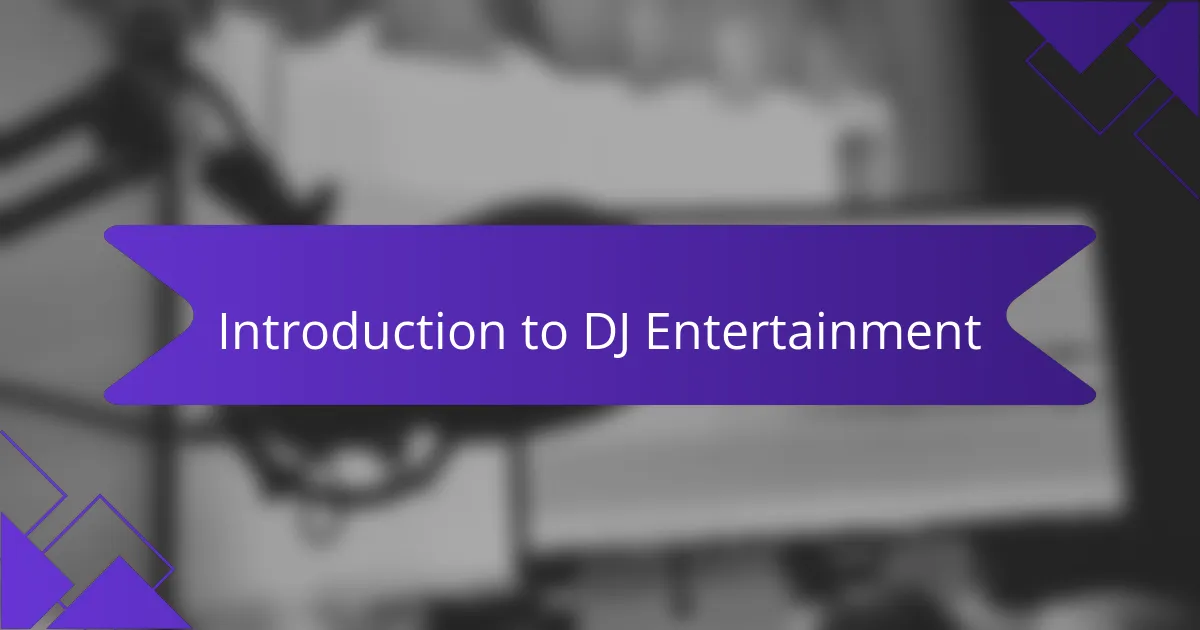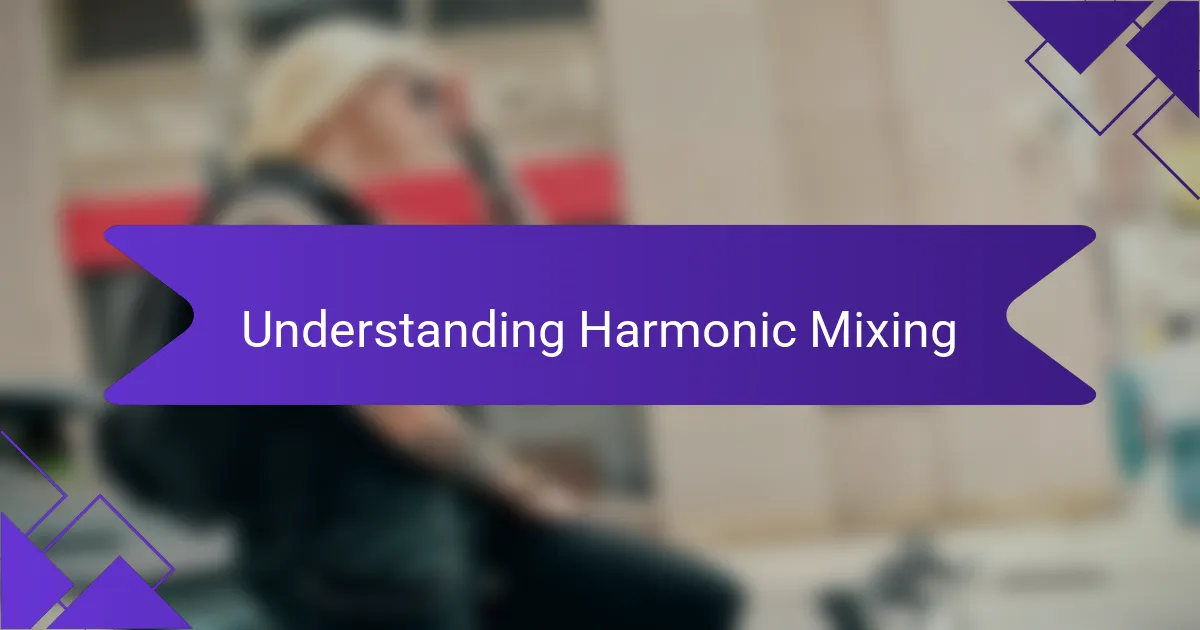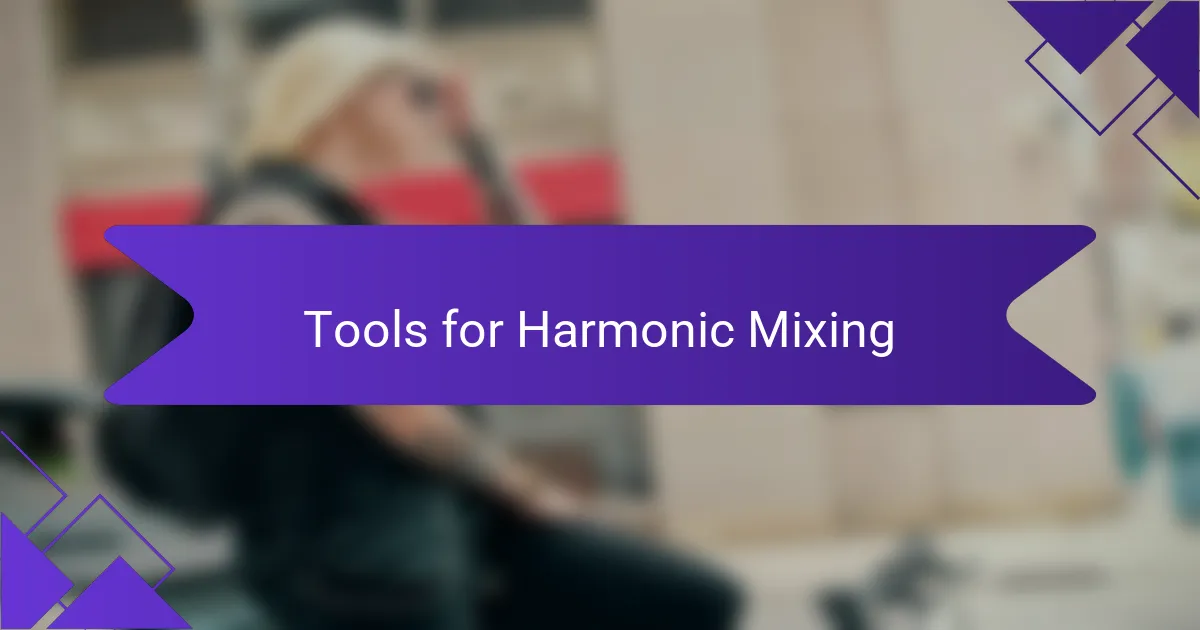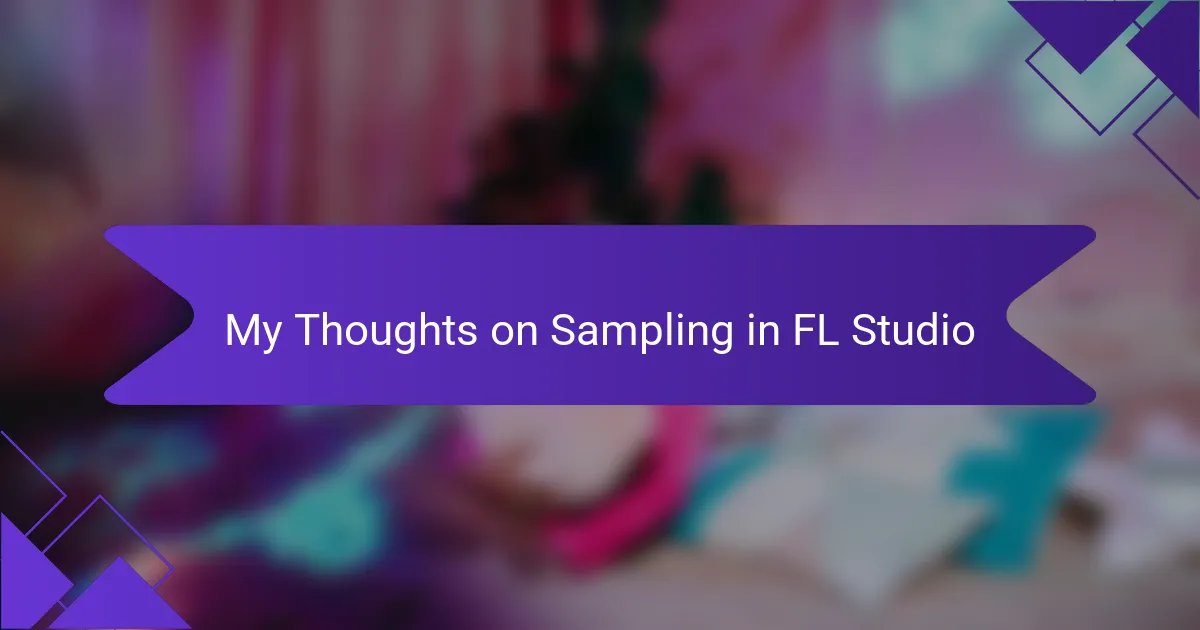Key takeaways
- Harmonic mixing enhances the DJing experience by creating seamless transitions based on compatible keys, elevating audience engagement and emotional impact.
- Utilizing tools like key detection features and the Circle of Fifths helps DJs effectively mix tracks, ensuring smoother performances.
- Experimentation and trusting one’s ear can lead to unexpected and magical musical combinations, making the journey of DJing more creative and fulfilling.
- Regular practice and understanding music theory, such as the Camelot Wheel, are essential for mastering harmonic mixing techniques.

Introduction to DJ Entertainment
DJ entertainment has evolved significantly over the years, blending technology with creativity to create unforgettable experiences. As a passionate DJ myself, I’ve seen firsthand how tools like DJ software enhance our ability to connect with audiences. It’s more than just playing music; it’s about crafting a journey that resonates with people on a personal level.
When I first started, I remember the exhilarating feeling of mixing tracks live and observing the crowd’s energy shift. The right combination can turn a good night into an unforgettable one. This is where harmonic mixing shines, enabling DJs to seamlessly transition between tracks that not only sound good together but also evoke deep emotional responses from the crowd.
Here’s a comparison table highlighting some key features of popular DJ software that support harmonic mixing:
| DJ Software | Harmonic Mixing Support |
|---|---|
| Serato DJ | Yes, offers a key detection feature |
| Traktor Pro | Yes, includes key analysis tools |
| Rekordbox | Yes, with an intuitive key display |
| DJay Pro | Yes, provides easy key syncing |

Understanding Harmonic Mixing
When I first dove into the concept of harmonic mixing, it felt like unlocking a new level in my DJing journey. The idea that just like in music theory, certain keys harmonize better than others, provided me with a fresh perspective on how to blend tracks seamlessly. I remember the thrill of mixing two tracks that, when paired correctly, made the dance floor come alive in a way I had never experienced before.
Understanding the Circle of Fifths was another turning point for me. It became my trusty map as I navigated through different keys. By grouping tracks into compatible keys, I started creating sets that flowed naturally, evoking deeper emotional responses from the crowd. It was like discovering a secret language that transformed not just my sets but also the connection I had with my audience.
Here’s a quick comparison to illustrate the concept of harmonic mixing versus traditional mixing:
| Aspect | Harmonic Mixing | Traditional Mixing |
|---|---|---|
| Key Compatibility | Tracks are mixed based on shared or compatible keys | Tracks can be mixed regardless of key |
| Emotional Impact | Creates a more cohesive and engaging atmosphere | Often creates a jarring effect |
| Technical Knowledge | Requires understanding of music theory | Focuses on beatmatching and tempo |

Benefits of Harmonic Mixing
Harmonic mixing is a game changer for DJs. It allows tracks in compatible keys to blend seamlessly, creating a smoother experience for the audience. I remember my first time using harmonic mixing – the floor just lit up when I transitioned between two tracks that were in harmony.
This technique not only enhances the sonic quality of your set but also lets you explore a broader range of music. It has significantly increased my creativity as a DJ, allowing me to connect tracks that I had never thought could work together.
Here’s a quick comparison of harmonic mixing versus traditional mixing:
| Harmonic Mixing | Traditional Mixing | |
|---|---|---|
| Blend Quality | Seamless transitions with complementary keys | Potential clashing between dissonant keys |
| Creativity | Wider selection of tracks based on key | Limited to specific genres or tracks |
| Audience Engagement | Higher energy and flow | Variable depending on key compatibility |

Tools for Harmonic Mixing
The tools for harmonic mixing have become essential in my DJ toolkit. One of my favorites is the key detection feature in Serato DJ. It not only analyzes the track’s key on loading but also allows me to see compatible keys right on the screen. I remember the first time I used this feature – the confidence it gave me while mixing was incredible; I felt like I had a musical insider’s advantage.
Another tool that has made a huge difference in my mixing is the Circle of Fifths integration in Traktor Pro. This visual guide has helped me understand key relationships and transition between tracks more intuitively. It’s like having a musical roadmap that guides my creativity. Have you ever felt stuck trying to find the right track to complement what you’re playing? That’s where this tool shines, making those moments of realization a lot more frequent.
Rekordbox’s intuitive key display also deserves a shout-out. It’s straightforward and user-friendly, which I appreciate during those high-energy sets when I’m juggling multiple things at once. I recall a night where I smoothly transitioned between three different genres, all thanks to the key display. It felt like I was conducting a symphony, and the audience responded with electrifying energy. Now, isn’t that what every DJ strives for?

My Journey with DJ Software
My journey with DJ software has been nothing short of transformative. I vividly remember my first attempts at mixing – the excitement and the inevitable jitters as I navigated the complex interface. With each session, I felt more at home. There’s something magical about seeing your creativity come to life through the software, especially when you discover features like harmonic mixing that take your performance to the next level.
Over time, I embraced different software options, each offering unique tools that shaped my mixing style. I found that some platforms excel in user-friendly design, while others provide extensive sound libraries. But for me, the power of harmonic mixing truly changed everything, enabling me to create seamless mixes that resonated with my audience on a deeper level.
| DJ Software | Features |
|---|---|
| Serato DJ | User-friendly interface, extensive library integration |
| Traktor Pro | Advanced effects and customizable layouts |
| Rekordbox | Perfect for preparing sets with harmonic mixing capabilities |

Tips for Effective Harmonic Mixing
When it comes to harmonic mixing, I’ve found that always checking the key of your tracks is essential. There are several software tools that can help with this, such as Mixed In Key or the key detection feature in many DJ software applications. I remember a time when I neglected this step, and it turned a potential peak moment of my set into a clash that left the crowd confused. Now, I double-check my tracks, ensuring they’re compatible before I even think about blending them.
Another effective tip is to keep a key guide handy, especially during live sets. It’s incredibly helpful to know which keys mix well together without causing dissonance. Personally, I’ve used a simple cheat sheet on the side, and it’s saved me from those awkward moments where you can feel the energy drop. Using the circle of fifths is a great method to visualize these relationships, and it absolutely makes mixing smoother and more enjoyable.
Finally, don’t underestimate the power of experimenting and trusting your ear. Sometimes, I’ve mixed tracks that aren’t perfectly in key, but because they evoke a good energy, they worked surprisingly well. I always encourage DJs to explore and find their unique sound through harmonic mixing.
| Tips | Description |
|---|---|
| Check Track Key | Use tools or software to ensure your tracks are in compatible keys. |
| Keep a Key Guide | Have a reference handy during sets to avoid key clashes. |
| Trust Your Ear | Experiment with combinations that might not align perfectly but feel right. |

Lessons Learned from My Experience
Harmonic mixing has truly transformed my approach to DJing. When I first experimented with this technique, I remember the thrill of seamlessly blending tracks that sounded extraordinary together. It was eye-opening to realize how crucial key matching is; the right combination can elevate a set from good to unforgettable.
From my journey with harmonic mixing, I would like to share some key lessons learned:
- Understanding the Camelot Wheel or key notation greatly simplifies the mixing process.
- It’s essential to listen to how tracks interact with one another beyond just the beats; harmony plays a huge role in the crowd’s response.
- Keep experimenting without fear—some unexpected key combinations can lead to magical moments.
- Always trust your ear; sometimes, the theory might suggest one thing, but if it feels right, go with it!
- Lastly, practice makes perfect—over time, I developed a knack for recognizing which tracks would complement each other harmonically.



